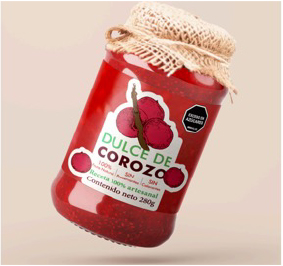Between synthetic and genuine: hybridization of creative processes with AI in the training of Art Directors
DOI:
https://doi.org/10.54104/nodo.v19n38.2173Keywords:
hybrid creativity, art direction, user experience design, design education, experience, artificial intelligence, creative process, Artificial intelligenceAbstract
This practical teaching inquiry explores the emerging dynamics between human creativity and artificial intelligence in the training of art directors, based on pedagogical experiences developed across three formative levels with graphic design students at Fundación Universitaria Los Libertadores. The reflection analyzes how the relationship with generative AI tools evolves throughout the formative sequence: workshop, project, and studio. The didactic approaches implemented at each level are documented, including exercises in “prompt engineering” and “post-generative intervention”. The results show significant transformations in students’ understanding of creative processes, developing metacognitive skills about their own process when confronted with automated systems. The study identifies emerging patterns of creative hybridization that generate greater value, mainly the cultural contextualization of generic outputs. This inquiry offers an approach to a methodological framework for art direction educators seeking to integrate these technologies without sacrificing the development of aesthetic judgment and critical thinking, using conceptual pedagogy and its proposed didactic sequence as a foundation.
Downloads
References
Áreas Ardila, C. A. (2024). Visualización de productos gastronómicos colombianos mediante IA generativa [Trabajo académico no publicado]. Fundación Universitaria Los Libertadores.
Benjamin, R. (2019). Race after technology: Abolitionist tools for the new jim code. Polity Press.
Birhane, A., & Caliskan, A. (2023). Cultural bias and representation in AI systems. Nature Machine Intelligence, 5 (2), 145-157.
Boden, M. A. (1990). The creative mind: Myths and mechanisms. Basic Books.
Boden, M. A. (2004). The creative mind: Myths and mechanisms (2nd ed.). Routledge.
Cross, N. (2006). Designerly ways of knowing. Springer- Verlag.
Csikszentmihalyi, M. (1996). Creativity: Flow and the psychology of discovery and invention. HarperCollins.
Davis, N. (2013). Human-computer co-creativity: Blending human and computational creativity. Proceedings of the AAAI Conference on Artificial Intelligence and Interactive Digital Entertainment, 9(1), 9-12.
De Zubiría, J. (2007). Los modelos pedagógicos: Hacia una pedagogía dialogante. Cooperativa Editorial Magisterio.
Escobar, A. (2018). Designs for the pluriverse: Radical interdependence, autonomy, and the making of worlds. Duke University Press.
García, M., & Rodríguez, L. (2022). Diseño gráfico en Colombia: Entre la tradición y la innovación tecnológica. Revista Colombiana de Diseño, 8(2), 45-62.
Glaveanu, V. P. (2014). Distributed creativity: Thinking outside the box of the creative individual. Springer.
Goldberg, E. (2019). Creatividad. El cerebro humano en la era de la innovación. Editorial Crítica.
Guallar, J. y Lopeosa, C. (2023). Inteligencia artificial, desinformación y aspectos éticos. En M. Ribera y O. Díaz (eds.), ChatGPT y educación universitaria (pp. 105-118). Ediciones de la Universidad de Barcelona.
Hernández Parra, N. y González Bertieri, M. N. (2023). Revestimientos fotoluminiscentes. Una propuesta desde la hibridación creativa con IA [Trabajo académico no publicado]. Fundación Universitaria Los Libertadores.
Huertas Otálora, D. M., Montaño Cano, L. S. y Sarmiento Izquierdo, M. A. (2024). Desarrollo narrativo transmedia mediante storyboard generativo [Trabajo académico no publicado]. Fundación Universitaria Los Libertadores.
Irani, L., Vertesi, J., Dourish, P., Philip, K., & Grinter, R. E. (2010). Postcolonial computing: A lens on design and development. Proceedings of the SIGCHI Conference on Human Factors in Computing Systems, 1311-1320.
Leach, J. y Leach, C. (2021). Cognitive hybridization: A machine-human hybrid approach to creative thought. Frontiers in Psychology, 12, 641448. https://doi.org/10.3389/fpsyg.2021.641448
Manovich, L. (2020). Cultural analytics. MIT Press.
Negus, K., & Pickering, M. (2004). Creativity, communication and cultural value. SAGE Publications.
Noble, S. U. (2018). Algorithms of oppression: How search engines reinforce racism. NYU Press.
Novoa Muñoz, M. (2022). Aprender del Sur Global: Chile y Australia. Diseño y Comunicación, 15(3), 18-26.
Pérez-Bustos, T. (2022). Methodological hybridity in computational creativity. Design Studies, 78, 101077. https://doi.org/10.1016/j.destud.2022.101077
Pinzón Restrepo, D. A. y Vargas Vargas, L. J. (2024). Visualización del dulce de corozo mediante herramientas de IA generativa [Trabajo académico no publicado]. Fundación Universitaria Los Libertadores.
Ribera, M. y Díaz, O. (2023). Introducción. En M. Ribera y O. Díaz (Eds.), ChatGPT y educación universitaria (pp. 11-33). Ediciones de la Universidad de Barcelona.
Rotger, M. (2018). Neurociencias Neuroaprendizaje. Las emociones y el aprendizaje. Editorial Brujas.
Santos, B. D. S. (2009). Epistemologies of the South: Justice against epistemicide. Paradigm Publishers.
Schön, D. A. (1987). The reflective practitioner: How professionals think in action. Basic Books.
Vygotsky, L. S. (1978). Mind in society: The development of higher psychological processes. Harvard University Press.
Wiggins, G. A. (2006). A preliminary framework for description, analysis and comparison of creative systems. Knowledge-Based Systems, 19(7), 449-458.

Downloads
Published
-
Abstract190
-
PDF (Español)75
How to Cite
Issue
Section
License
Copyright (c) 2025 Jaime Andrés Vallejo Bejarano

This work is licensed under a Creative Commons Attribution-NonCommercial-ShareAlike 4.0 International License.



 Portal de Ciencia Abierta
Portal de Ciencia Abierta